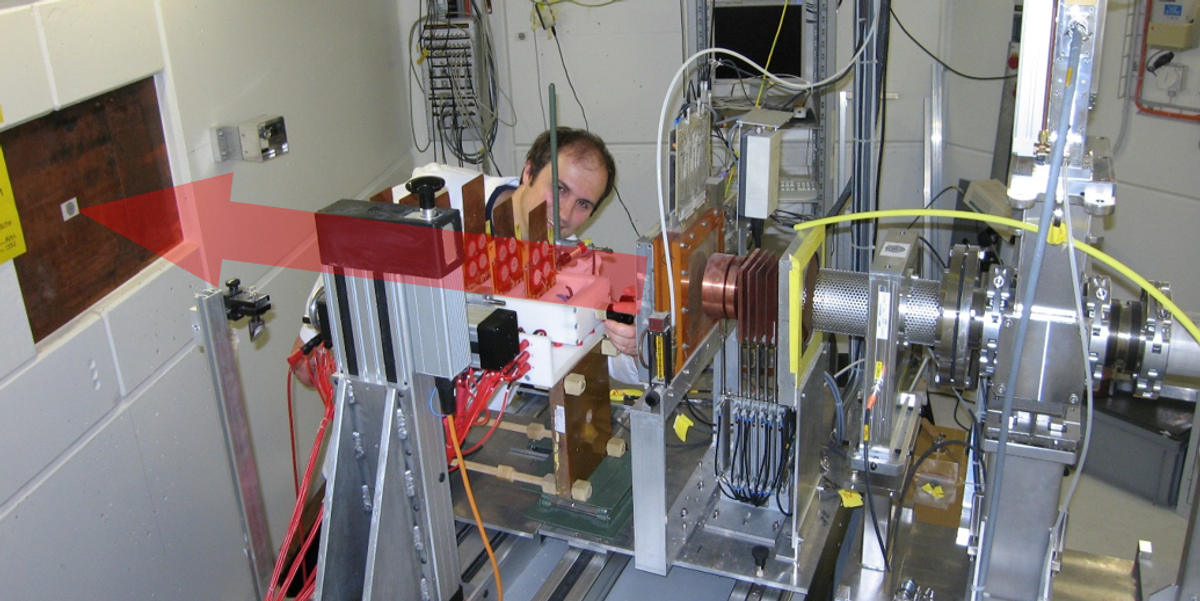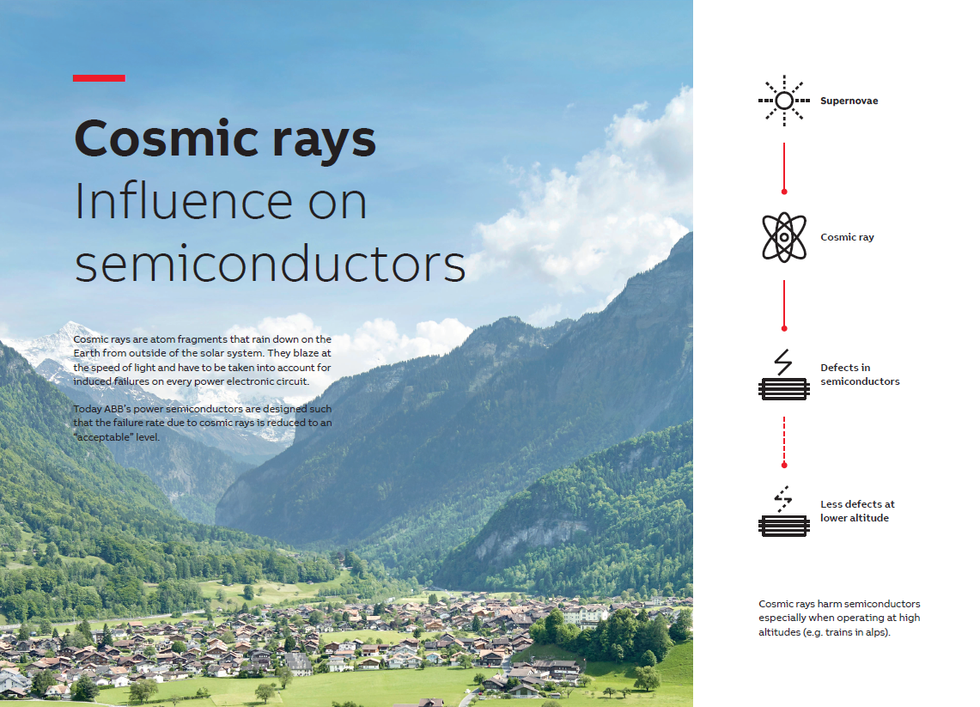Introduction
The increased failure rate of traction propulsion converters in the early 1990s, lead to the recognition of cosmic ray failure mode for power devices. The famous experiment, whereby the failure rate of devices in a blocking condition in a laboratory were compared to the blocking failure rates in a salt-mine, was undertaken by Siemens engineers. The absence of failure in the salt mine supported the hypotheses of cosmic ray particles as the root cause of the failures [1]. Further tests executed by ABB on the Jungfraujoch at 3580 m above sea level (a.s.l), confirmed this hypothesis. Additional tests with proton beams made it reproducible in the laboratory. This leads to improved design and statement in regard to ruggedness of power semiconductor devices.
Cosmic particles
Primary cosmic particles (typically protons) are generated in remote areas of the universe e.g. in the supernovae. The particle energy can be extremely high; several orders of magnitude higher than artificially accelerated particles in the most powerful accelerators such as the one in the CERN research centre. But these are not the particles that directly cause device failure on the earth. During their travel towards the earth, many particles are deflected by the sun and earth’s magnetic field. This is why the cosmic particles detected on earth vary with the 11 years activity cycle of the sun. Those particles that are approaching the earth interact with the atmosphere. In this interaction, a shower of new, secondary, tertiary, … particles (protons, neutrons, electrons, …) are generated. Up to an altitude of 10,000 – 15,000 m the generation of particles is dominant, whereas nearer earth altitudes, absorption of particles dominates. At the surface, the x’th generation of the initial primary cosmic can be detected (terrestrial cosmic). A typical flux is 20 neutrons per cm2 per hour (sea level New York), see Figure 1.From this description, one can conclude that the flux of terrestrial cosmic particles is dependent on altitude. Dependencies on the latitude, due to the influence of the earth’s magnetic field, and the actual sun activity, can be neglected for a first order estimation.
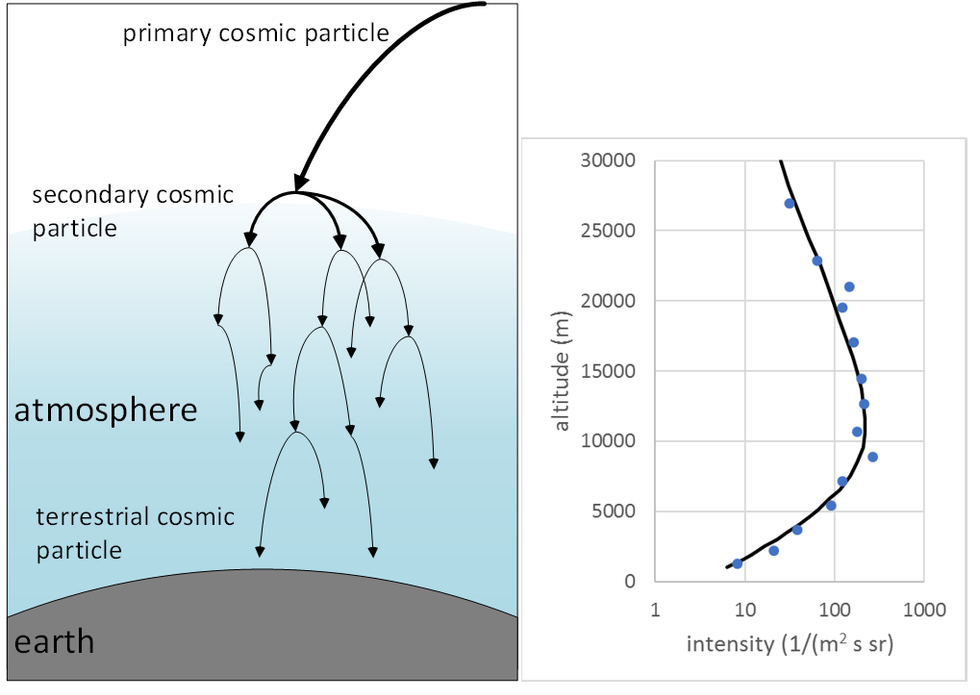
As the atmosphere is absorbing cosmic particles, other materials could be used as a shield. For example, a 45 cm layer of concrete reduces the intensity of cosmic neutron particles by half [3]. But as for a significant shielding effect, heavy shielding would be necessary which is not an option for many applications.
Failure mode
Most cosmic particles pass the semiconductor devices without any interaction. With a certain probability the cosmic particles interact with the nucleus of a silicon atom in the device. Then the energy of the particle displaces the hit atom and may generate new particle species. Although a microscopic defect in the silicon crystal is generated, the concentration of the generated defects, even during the lifetime, would not lead to a measurable degradation for typical irradiation conditions, for a non-operating device. The situation might be different for operated semiconductor devices. Logic devices, or memories, store their information, typically, through a small charged capacitor. Here the deposited energy of a cosmic particle may lead to a bit flip and therefore to a loss of information. In devices that support an electric field, the deposited energy of a cosmic particle may lead to a local charge cloud that is amplified through the electric field. A short current pulse may be detected at the biased device. This effect is used for particle detectors for physical experiments to identify and count high energetic particles. In devices that support a high electric field, like power semiconductor devices, the deposited energy may lead to formation of a streamer, a conducting pipe in the blocking semiconductor device see Figure 2. In such a case the device may be destroyed as shown in Figure 3.
Figure 2: Sketch of a particle induced power semiconductor failure by the formation of a streamer that shorts the blocking device.
The failure of devices due to cosmic rays are sudden events, without any precursor. Therefore, they are often called ‘Single Event Burnout’ (SEB). The probability of a device failure depends on the intensity of the cosmic irradiation (therefore on the altitude and shielding as previously explained), and strongly on the electric field strength and distribution in the power semiconductor device (therefore on the applied blocking voltage and device design). Other influencing parameters are device temperature and beam direction.
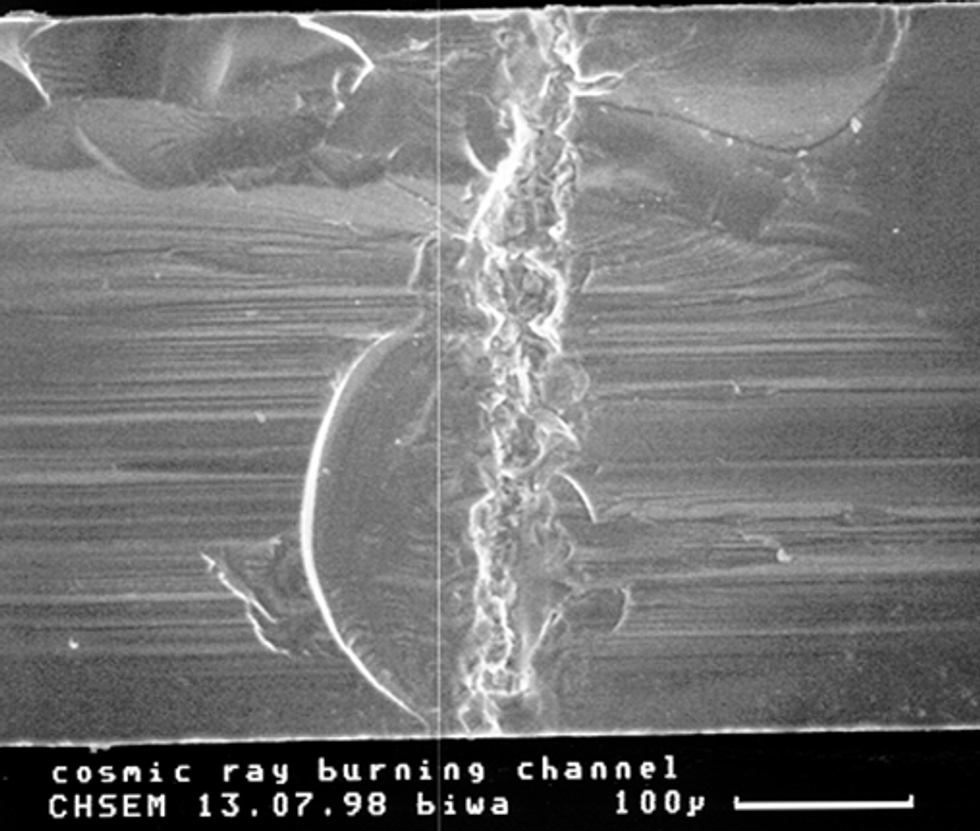
Testing
For testing of semiconductor devices for cosmic ray ruggedness, data needs to be acquired in a reasonable testing time. This can be reached by:
Testing many devices in parallel to get a higher probability of failure events during the test time.
Increasing the sensitivity of the tested devices, by operating them during the test at higher blocking voltages than in typical applications. The failure rate for a typical application then needs to be extrapolated. This method was used in the beginning of the cosmic ray ruggedness investigation .
Another way to accelerate testing is to increase the cosmic ray flux. As seen before, the intensity of cosmic particles increases to an altitude of 10,000 – 15,000 m a.s.l. In the beginning of cosmic ray ruggedness investigation of power semiconductor devices, this effect was used to reduce test time. ABB operated a test lab at the High Altitude Research Station, Jungfraujoch in the Swiss Alps at 3580 m, see Figure 4. At this altitude the intensity of cosmic particles is approximately a factor of 10 higher that at sea level.
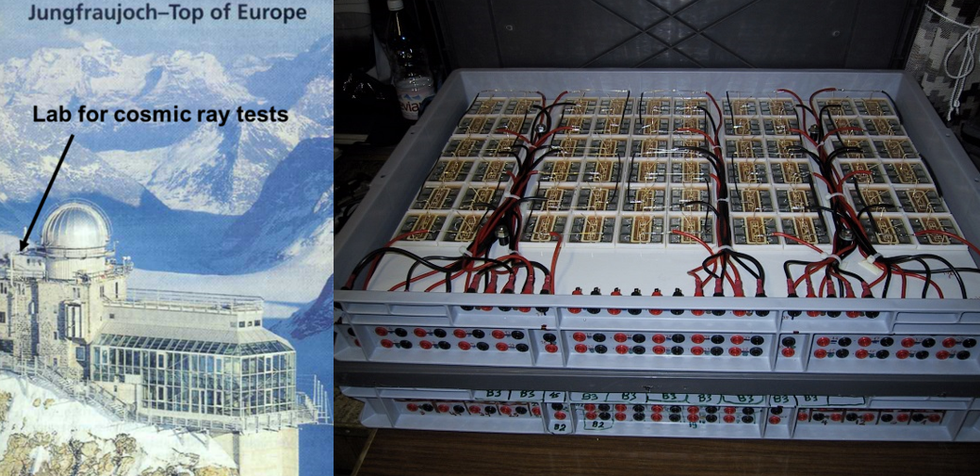
But even with acceleration, testing times are still in the order of several months to years. This is too long, especially for verification testing during the development phase of semiconductors with several learning cycles.
A much faster way to get the relevant data is to use artificial particle beams, like neutron or proton beams. Studies showed, that the failure rates generated by natural cosmic particles very well correspond to data generated in artificial particle beams, see Figure 5. The test time for such a setup reduces to minutes.
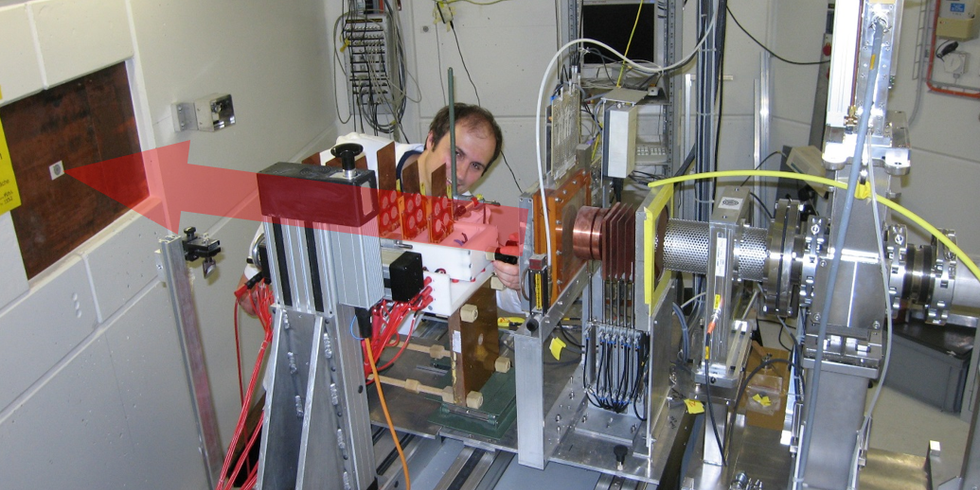
Specification of devices ruggedness
Some power semiconductor suppliers specify the cosmic ray ruggedness of their devices either in the data sheet or in an application note e.g. [5]. The parameters for the failure probability, such as applied bias, junction temperature or altitude, are given for an unshielded device. This helps to estimate the failure rate of the power semiconductor under the individual application conditions and to choose the right device.
References
[1] | H. Kabza, H.-J. Schulze, Y. Gerstenmaier, P. Voss, J. Wilhelmi, W. Schmid, F. Pfirsch und K. Platzöder, „Cosmic Radiation as a Cause for Power Device Failure and Possible Countermeasures,“ in Proc. of the 6th Internat. Symposium on Power Semiconductor Devices & IC's, Davos. Switzerland, 1994. |
[2] | O. C. Allkhofer und P. K. F. Grieder, ,,Cosmic Rays on earth,“ Physics Data , Bd. 25, Nr. 1, 1984. |
[3] | F. J. Ziegler, „Terrestrial cosmic rays,“ IBM J. Res. Develop., Bd. 40, Nr. 1, pp. 19-39, 1996. |
[4] | C. Findeisen, E. Herr, M. Schenkel, R. Schlegel und H. Zeller, „Extrapolation of cosmic ray induced failures from test to field conditions for IGBT modules,“ Microelectronics Reliability, Bd. 38, pp. 1335 - 1339, 1998. |
[5] | H. Zeller, „Cosmic ray induced breakdown in high voltage semicoductor devices, microscopic model and phenolenological lifetime prediction,“ in 6th International Symposium on Power Devices & IC's , Davos, Switzerland, 1994. |
[6] | 5SYA 2046-03, „Failure rates of IGCTs due to comsic rays,“ ABB Application Note, 2014. |
Infographic cosmic rays influence on semiconductors
Failure rates of fast recovery diodes due to cosmic rays
